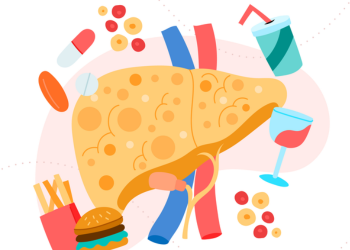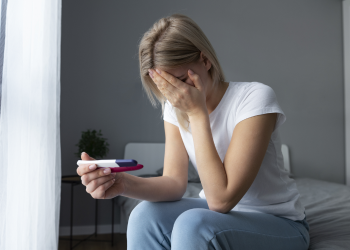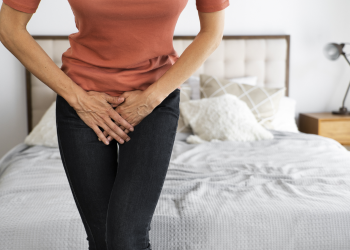Migraine

A migraine is much more than a bad headache. This can cause debilitating
throbbing pain that can leave you in bed for days. Movement, light, sound, and
other triggers may cause symptoms like pain, tiredness, nausea, visual
disturbances, numbness and tingling, irritability, difficulty speaking,
temporary loss of vision, etc.
A migraine is most notably a throbbing, pulsing headache on
one side of your head it’s the sixth most disabling disease in the world.
There are over 150 types of headaches, divided into two categories:
primary headaches and secondary headaches. A migraine is a primary headache,
meaning that it isn’t caused by a different medical condition. Primary headache
disorders are clinical diagnoses, meaning there’s no blood test or imaging
study to diagnose them. A secondary headache is a symptom of another health
issue.
AURA IN MIGRAINE
An aura is a group of sensory, motor, and speech symptoms that usually
act like warning signals that a migraine headache is about to begin.
- Seeing bright flashing dots, sparkles, or lights.
- Blind spots in your vision.
- Numb or tingling skin.
- Speech changes.
- Ringing in your ears
- Temporary vision loss.
- Seeing wavy or jagged lines.
- Changes in smell or taste.
- A “funny” feeling.
TYPES
- Migraine with aura (complicated migraine)
- Migraine without aura (common migraine)
- Hemiplegic migraine
- Retinal migraine (ocular
migraine)
- Chronic migraine: A chronic migraine is when migraine occurs at least 15
days per month.
- Migraine with brainstem aura. With this migraine, you'll have vertigo, slurred
speech, double vision, or loss of balance, which occurs before the headache.
The headache pain may affect the back of your head
- Status migrainosus. This is a rare and severe type of migraine that
can last longer
RISK FACTORS
- Genetics
- Migraine headaches happen to women more than men
- Stress
- Smoking.
SYMPTOMS
The primary symptom of migraine is a headache. Pain is sometimes
described as pounding or throbbing. It can begin as a dull ache that develops
into pulsing pain that is mild, moderate, or severe. If left untreated, your
headache pain will become moderate to severe. Pain can shift from one side of
your head to the other, or it can affect the front of your head, the back of
your head, or feel like it’s affecting your whole head. Some people feel pain
around their eyes or temple, and sometimes in their face, sinuses, jaw, or
neck.
Other symptoms of migraine
headaches include:
- Sensitivity to light, noise, and odors.
- Nausea and vomiting, upset stomach, and abdominal pain.
- Loss of appetite.
- Feeling very warm (sweating) or cold (chills).
- Pale skin color (pallor).
- Feeling tired.
- Dizziness and blurred vision.
- Tender scalp.
- Diarrhea.
- Fever
Most migraines last about four hours, although severe ones can last much
longer.
Each phase of the migraine attack
can come with different symptoms:
Prodrome symptoms:
- Problems concentrating.
- Irritability and/or depression.
- Difficulty speaking and reading.
- Difficulty sleeping.
- Yawning.
- Nausea.
- Fatigue.
- Sensitivity to light and sound.
- Food cravings.
- Increased urination.
- Muscle stiffness.
Aura symptoms:
- Numbness and tingling.
- Visual disturbances. You might be seeing the world as if through a
kaleidoscope, have blurry spots, or see sparkles or lines.
- Temporary loss of sight.
- Weakness on one side of the body.
- Speech changes.
Headache symptoms:
- Neck pain, stiffness.
- Depression, giddiness, and/or anxiety.
- Sensitivity to light, smell, and sound.
- Nasal congestion.
- Insomnia.
- Nausea and vomiting.
Postdrome symptoms:
- Inability to concentrate.
- Depressed mood.
- Fatigue.
- Lack of comprehension.
- Euphoric mood.
RISK FACTORS
- Emotional stress.
- Missing a meal
- Sensitivity to specific chemicals and preservatives in
foods. Certain foods and beverages such as aged cheese, beverages
containing alcohol, chocolate and food additives such as nitrates (found in
pepperoni, hot dogs, and luncheon meats) and fermented or pickled foods may be
responsible for triggering up to 30% of migraines.
- Caffeine. Having
too much caffeine or withdrawal from caffeine can cause a headache
- Daily use of pain-relieving medications.
- Hormonal changes in women
- Light. Flashing lights, fluorescent lights, light from the TV or
computer, and sunlight
- Changing weather conditions
- Being overly tired.
- Overexertion.
- Dieting
- Not drinking enough water.
- Changes in your normal sleep pattern.
- Loud noises.
- Exposure to smoke, perfumes
- Certain medications
DIAGNOSIS
- Blood tests
- Imaging tests like CT scan or
an MRI
- An electroencephalogram (EEG)
- Migraine with aura (complicated migraine)
- Visual symptoms (seeing spots, sparkles, or lines) or vision loss.
- Sensory symptoms (feeling pins and needles, for example).
- Migraine without aura (common migraine)
- The attacks included pain on one side of your head.
- Nausea and/or vomiting.
- Lights bother you and/or you avoid light.
- Sounds bother you and/or you avoid sounds
MANAGEMENT
- Keep a migraine diary. Take notes about any foods and other triggers
that you think may have caused you to develop a migraine. Make changes in your diet
and avoid those triggers as much as possible.
- Get seven to nine hours of sleep a night.
- Eat at regular intervals. Don't skip meals. Drink plenty of water.
- Exercise regularly and maintain a healthy weight.
- Learn techniques to control stress such
as meditation, yoga, relaxation training, or mindful breathing.





